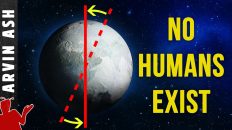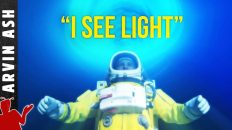Try Blinkist free for 7 days: https://www.blinkist.com/arvinash
Physicists know how to use the equations of quantum mechanics to predict things, but don’t really understand what is fundamentally going on.
The primary challenge is that according to the equations of QM, all particles exist in a state of superposition. In fact, before it is measured, the particle is said to be in many states at once.
How does one explain the transition from the behavior of objects at quantum scales to their classical behavior upon measurement? The various interpretations of quantum mechanics are attempts to explain this transition.
The standard is the Copenhagen interpretation because if was devised in Copenhagen, Denmark by Niels Bohr and Werner Heisenberg. This is taught to most students in college. But even a majority of physicists do not agree that this is the correct interpretation. There is no single interpretation that has a consensus agreement.
Most interpretations focus on the Schrodinger equation and the wavefunction to explain quantum behavior. This equation was developed by Irish-Austrian physicist Erwin Schrodinger in 1926. It contains a wave function, represented by the Greek letter psi.
German physicist Max Born formulated the interpretation of psi, which is that the square of the norm of psi is the probability of finding a particle in any one particular state if we were to measure it.
The concept of measurement was introduced to explain what we actually see when we make an observation.
The fact is that even if it were possible for us to directly observe quantum particles, we would never see them being in superposition, we would only observe them being in one state or another.
Let’s look at this in terms of the famous Schrodinger’s cat experiment. We have a box with 4 things in it, cat, a radioactive source, a detector with hammer attached and a vial of poison gas.
If the detector detects radiation, the hammer will smash the vial of gas and the cat will die. If no detection, the cat will stay alive.
If we look at this from the quantum mechanical point of view, there are two possibilities for the wave function of this system – cat dead or cat alive. Both are in superposition.
In the Copenhagen interpretation, as soon as you open the box to make an observation, one of the probabilities comes true, and the other probability disappears. The wave function “collapses” as the result of a measurement by an observer or apparatus external to the quantum system. A measurement is an interaction of the quantum system with a classical system, which can be the observer.
The problem with this interpretation it doesn’t explain how this collapse happens – what is the mechanism? This is the measurement problem. Bohr might have said it just fits the data, so we know collapse occurs.
An alternative, the many worlds interpretation of the same event would be that no collapse occurs, but that two different worlds with two different results exist simultaneously.
This interpretation was formulated by Hugh Everett in 1957 as a graduate student at Princeton University. Some say this is the simplest interpretation of quantum mechanics because it introduces no other assumptions, other than the Schrodinger equation.
The distinction that the many worlds interpretation makes vs. the Copenhagen interpretation is that it says, the observer is also a quantum system, and is entangled with the cat. Both the cat and observer are part of the same wave function. So the reality where the cat is alive, is but one world. But there is another reality the cat is dead. Both worlds exist. You just happen to find yourself in one of them.
Why do we find ourselves in only one branch? Everettians say it is due to decoherence.
Quantum decoherence is the physical process that is used to describe how quantum states transition to the one state that we experience. The key realization is that in reality, you have more than just you and the cat entangled. Both will also be entangled with their environment because THAT is also a quantum system. The environment inside the box for a cat that is alive will be different than the environment for a cat that is dead.
Because the entanglement with the environment now enters the picture, the coherent superpositon between you and the cat is broken. The Schrodinger equation says that the two parts of the wave function above are perpendicular to each other, that have no connection to each other. This can be interpreted as two separate worlds.
#copenhageninterpretation
#manyworldsinterpretation
It is as if the universe splits into two separate worlds. This is decoherence. It is another way of explaining how quantum superposition gets lost, by interaction with the environment. You can also think of this as the quantum nature of the original 2 component system leaking information into the environment due to its with it.







